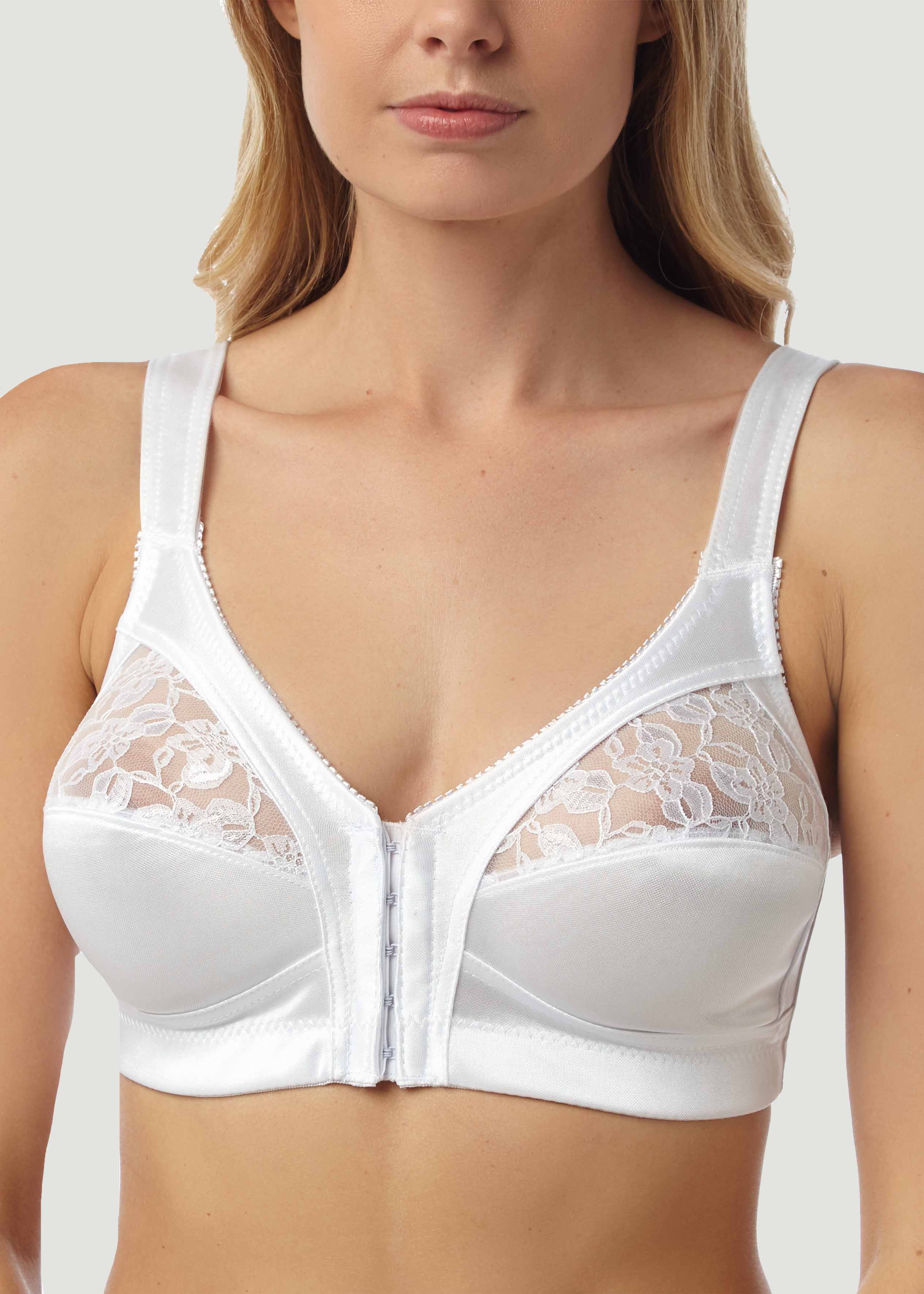Front Hook Bras: The Game Changer for Effortless Style and Comfort
Imagine starting your day with an undergarment that feels less like a constraint and more like a second skin—a piece of clothing designed not just to support but to liberate. This is the promise of bras that hook in front, a design innovation transforming how we perceive lingerie. For decades, the traditional back-closure bra has dominated the market, often associated with awkward contortions during dressing and potential discomfort from hard-to-reach fasteners. In contrast, front-hook bras introduce a paradigm shift, merging ergonomic functionality with modern aesthetics. Their rising popularity isn’t merely a trend; it’s a response to a growing demand for intuitive design that respects the wearer’s time, body, and lifestyle. From busy professionals seeking efficiency to individuals with mobility challenges requiring accessible solutions, these bras cater to a diverse audience by simplifying the dressing process. The essence of their appeal lies in the seamless integration of practicality and comfort, challenging the status quo of intimate apparel. As we delve deeper, it becomes clear that this isn’t just about a different closure mechanism—it’s about redefining everyday ease and confidence.

Ergonomic Design and Accessibility: A Scientific Perspective
The ergonomic advantages of bras that hook in front are rooted in biomechanics, the study of human movement and efficiency. Traditional back-fastening bras often require a significant range of motion in the shoulders and spine, which can be challenging for individuals with conditions like arthritis, rotator cuff injuries, or limited flexibility. According to resources from authoritative institutions like the University of Michigan’s Department of Physical Medicine and Rehabilitation, reducing strain during dressing is crucial for joint health, particularly for aging populations or those in post-surgical recovery. Front closures allow the wearer to fasten the bra while viewing the hooks directly, minimizing awkward twisting and overextension. This design aligns with principles from ergonomics literature, which emphasize minimizing repetitive stress and maximizing user control. For example, a study cited in “Human Factors and Ergonomics in Consumer Product Design” highlights that products enabling visual and manual access significantly reduce dressing time and frustration. Moreover, from a psychological standpoint, the ease of use fosters independence, a point echoed by disability advocates on platforms like Quora, where users share how front-hook designs empower them to dress without assistance. The accessibility extends beyond physical limitations; consider parents holding infants or travelers in tight spaces—the front closure offers a quick, one-handed solution that back hooks cannot match. This isn’t just convenience; it’s a thoughtful adaptation to real-world needs, making bras that hook in front a benchmark for inclusive design in fashion.

Support and Comfort: Debunking Myths with Physics and Anatomy
One common misconception is that front-closure bras compromise support compared to their back-closure counterparts. However, engineering and anatomical analysis suggest otherwise. The support of a bra primarily derives from the band beneath the bust, which should provide around 80% of the lift, as noted in fit guides from reputable sources like Wikipedia’s bra design entries. In bras that hook in front, the closure often integrates reinforced panels or wider center gore (the piece between the cups), distributing tension more evenly across the chest. This can reduce pressure points on the spine, a benefit highlighted by chiropractors in wellness blogs who point out that uneven strap tension from back hooks may contribute to posture issues. For instance, a well-known fitness influencer on YouTube demonstrated through motion-capture technology how front closures maintain stability during activity by preventing band ride-up. Additionally, materials science plays a role: many modern front-hook bras use flexible yet sturdy components like molded hooks and elasticated bands, ensuring the bra moves with the body rather than against it. From a comfort perspective, the absence of back hardware eliminates digging into the skin, which is particularly beneficial for all-day wear. User reviews on e-commerce sites frequently mention that switching to front-hook styles alleviated chronic back pain, underscoring that comfort is not just about soft fabrics but intelligent load distribution. Thus, these bras challenge outdated notions by proving that support can be achieved through forward-thinking design, making them a reliable choice for various body types and activities.

Style Versatility: From Practicality to Fashion Statement
Beyond functionality, bras that hook in front have evolved into fashion-forward pieces that complement contemporary wardrobes. Historically, functional lingerie was often hidden, but modern designs blur the lines between undergarments and outerwear. Inspired by trends seen on runways and in street style—such as the popularity of front-fastening details in tops and dresses—these bras offer aesthetic flexibility. For example, a low-back outfit might expose a traditional bra’s closure, but a front-hook design with decorative elements can serve as an intentional accent, much like visible straps in high-fashion contexts. This versatility is celebrated by style experts on platforms like Twitter, where influencers share how front-closure bras pair seamlessly with off-shoulder or racerback attire. Moreover, the design encourages innovation in silhouettes; some brands incorporate lace, metallic hardware, or unique patterns that transform the bra into a standalone piece. From a cultural perspective, this shift reflects broader movements toward body positivity and self-expression, as seen in campaigns by brands like Aerie, which emphasize comfort without sacrificing style. The integration of professional knowledge here is key: understanding fabric drape and seam placement allows designers to create front-hook bras that smooth rather than bulge, offering a discounted price point for quality that rivals luxury labels. Ultimately, these bras prove that practicality and elegance are not mutually exclusive, empowering wearers to feel confident in any setting.

In embracing bras that hook in front, we choose more than just an undergarment; we opt for a lifestyle centered on ease and self-assurance. This design stands as a testament to innovation that listens to the wearer’s voice, offering a blend of science, style, and accessibility that redefines daily comfort. As you explore options, remember that the right bra should feel like an ally—not a hurdle—in your journey toward effortless living.






